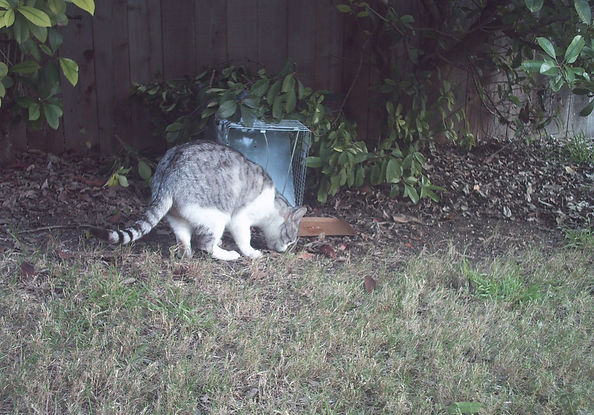Professional Interests
Climate Change and Wildlife
Climate change is perhaps the most pervasive threat facing humans and wildlife. With all species impacted in one way or another, I am interested in studying how species are affected, through which mechanism(s), and how populations adapt (or fail to). As temperatures continue to rise and heat records continue to be shattered, this knowledge is especially critical to predict and mitigate population declines of vulnerable species.

Educational Outreach and Citizen Science
I am interested in workshops, camps, citizen science programs, and symposia that educate and provide hands-on activities for the public. In my experience, the average American is disconnected from but fascinated by nature. Hands-on demonstrations and activities with birds and other wildlife are great ways to garner support for conservation issues and talk about otherwise controversial topics, such as climate change. I am an advocate of citizen science projects that anyone can participate in and learn from. In addition to benefiting the public, these data also contribute to our understanding of wildlife.
Below are a list of citizen science projects I've participated in and recommend. Click on the links to learn more.

Male Northern Cardinal (Cardinalis cardinalis). Photo courtesy of Sara Harrod.
Female Black-chinned Hummingbird (Archilochus alexandri) at a banding workshop. Photo courtesy of Sara Harrod.
Urban Wildlife Conflict and Mediation
Having grown up in the suburbs of San Antonio, I've seen firsthand the complicated relationships between people and urban wildlife. Some species such as songbirds are eagerly enticed to people's homes, some such as snakes are actively discouraged, and others such as deer fall somewhere in the middle. Preventing and reducing conflict is necessary for the health of urban wildlife and the well-being of people, particularly in areas where large predators such as bears and mountain lions may come into contact with people.

Mourning Dove (Zenaida macroura) chicks in a hanging cactus basket in a suburban backyard. Photo courtesy of Sara Harrod.
Invasive Species Ecology
Invasive species have been heavily studied, but managing or their populations has proven challenging. Most of my experience with invasives has involved House Sparrows (Passer domesticus), European Starlings (Sturnus vulgaris), and feral cats (Felis catus). I believe there is a great need for educating the public as to what constitutes an invasive species, why they pose a problem to native wildlife, and what people can do to help. I'm particularly passionate about controlling feral cats and trap-neuter-release programs, which pose a major threat to wildlife populations and potentially as human health. Though there are millions of feral and free-roaming cats in North America, I believe this is a problem that can be solved humanely and benefit cats, people, and wildlife (for examples of this, see the Hillsborough Animal Foundation's AWAKE program and the Lanai Cat Sanctuary pages).

Unneutered feral cat in a backyard being conditioned to eat near a Havahart® trap. Photo courtesy of Sara Harrod.